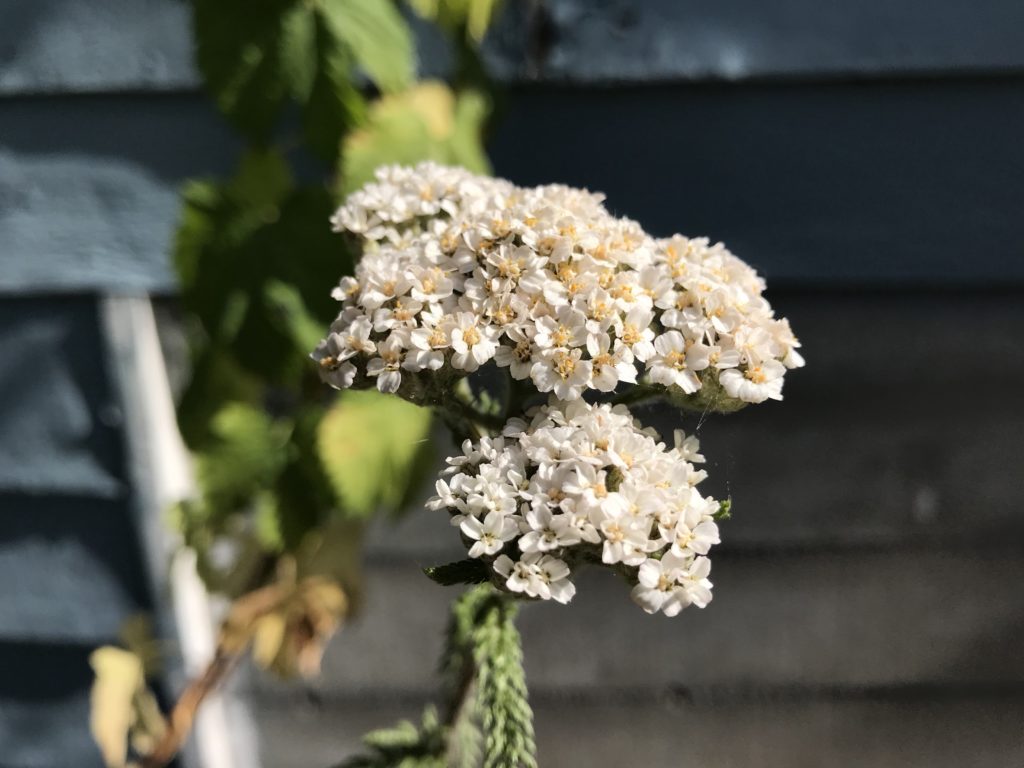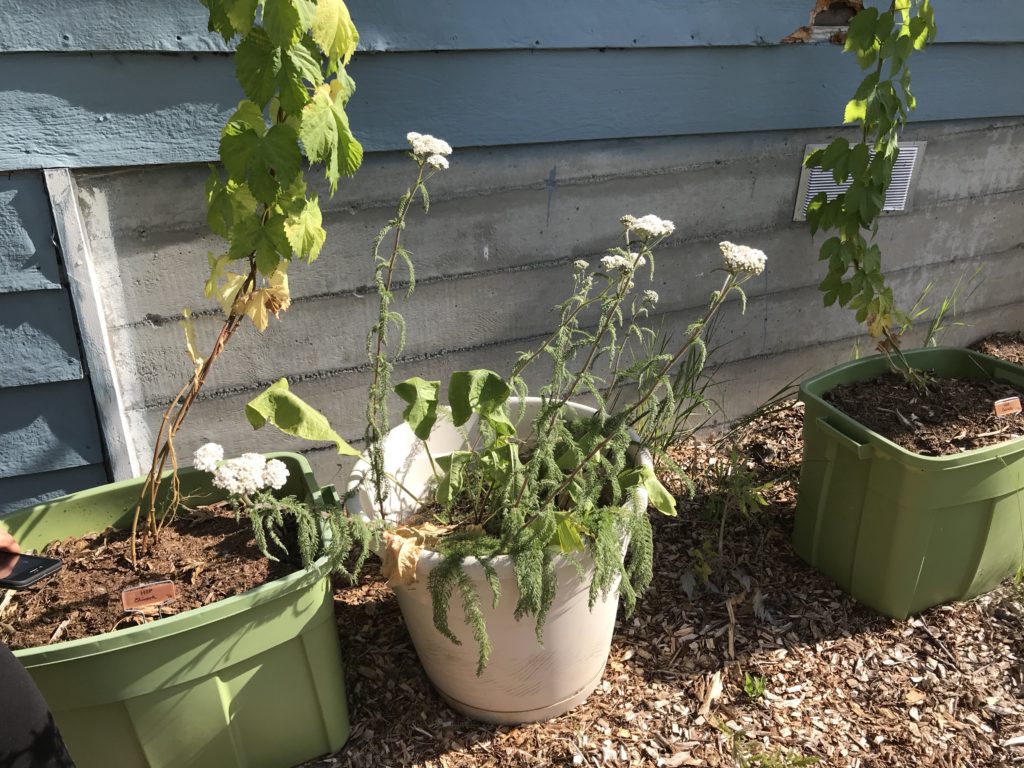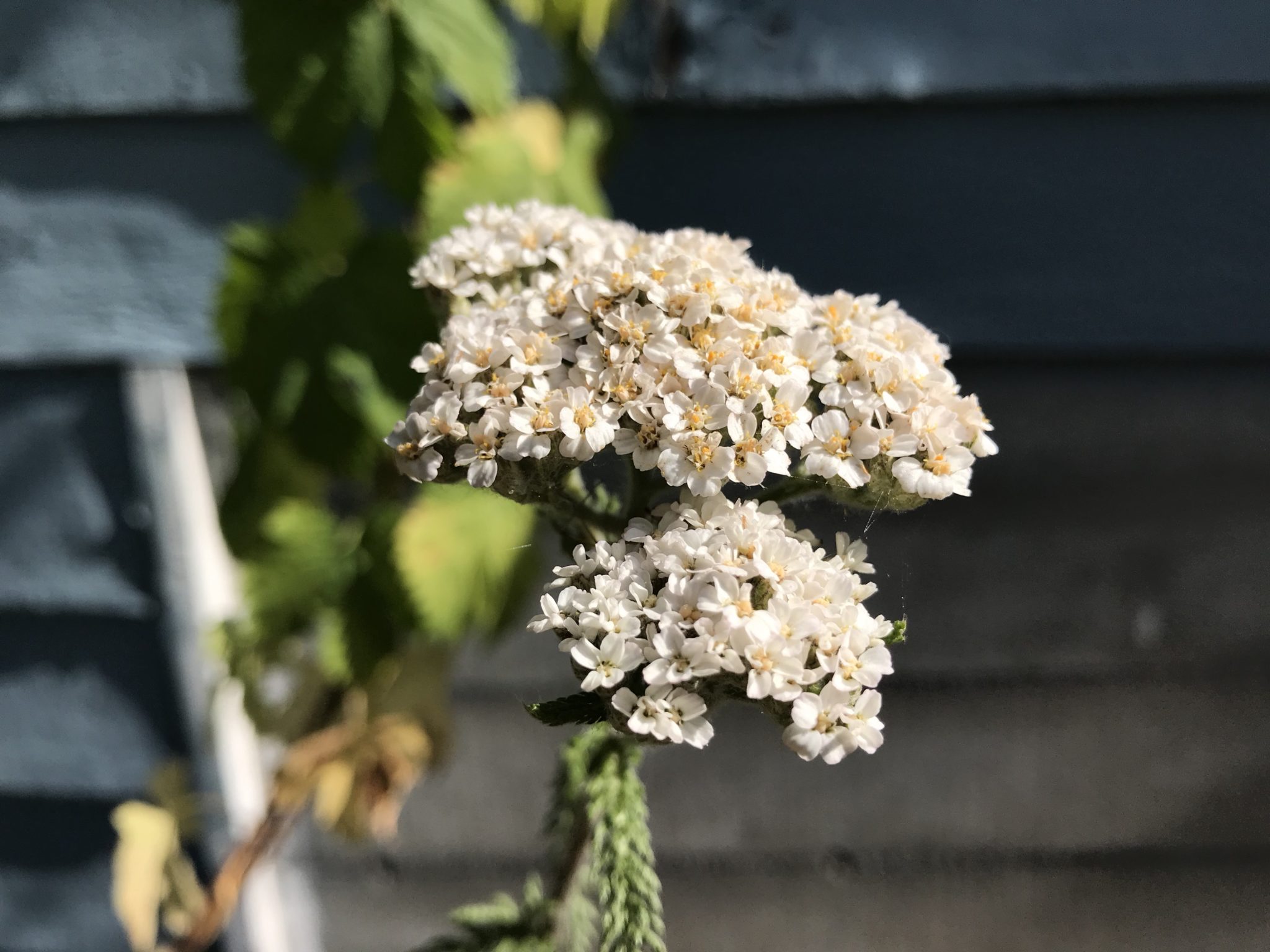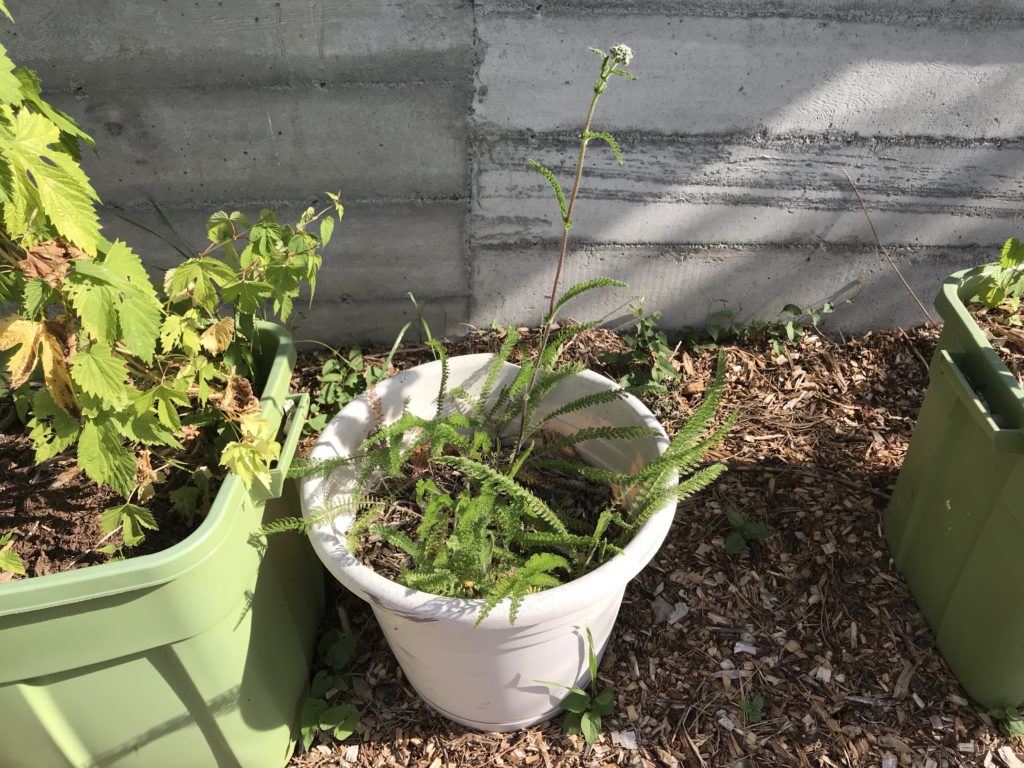
Achillea millefolium, or yarrow, is a classic gruit herb that is prolific and easy to grow. It has been used medicinally throughout history. It’s most well known property is its ability to stanch wounds. Brewing with yarrow is easy and it provides a good foundation for an herbal ale.
Foraging Yarrow
Yarrow grows in a number of different conditions, and it tends to do best in warmer dry climes. In Washington, it can be found on both sides of the mountains in lawns mixed with grass; it makes a good ground cover if kept mowed. You can also find it on the side of the road and in places with disturbed or neglected soil.
Growing Yarrow

Yarrow can be grown in a pot or in the ground. It will spread slowly by roots, so give some thought to where you plant it if you’re planting in the ground. It loves sun, and requires very little care. I’ve kept yarrow in pots for several years with virtually no maintenance. The dead leaves and stalks can be cut down in the winter if desired, and the roots can be divided every 2-5 years.
If you’re primarily using the flowers, you can deadhead them to encourage the plant to produce additional flowers throughout the season. If you’re using the leaves as well, you can wait for the stalks to flower and then cut down the whole stock.
To prepare the yarrow for brewing, the leaves and flowers will need to be dried. If you are harvesting entire stalks at a time, you can simply hang the stalks to dry, then cut the flower heads off and pull the leaves off the stem. If you are harvesting just the leaves or the flowers, you can put them loosely in a paper bag with some small holes in it, and hang the bag to dry.
Brewing with Yarrow
The dried leaves and flowers are most commonly used in brewing. The leaves contribute a bitter, astringent taste, while the flowering heads provide a mild floral aroma. Yarrow is also purported to increase the medicinal and physiological effects of other herbs used in the beer.
Due to their bitterness, you can use the leaves much like bittering hops, although the bitterness will drop out of the beer more quickly than with hops. To provide floral aromatics, the flowering heads can be added late in the boil, steeped after the boil, or dry herbed in the fermentor.
Maximum Usage Rates
- 0.4 ounces per gallon (2 ounces per 5 gallons)
- 3 grams per liter (57 grams per 19 liters)
- 12.4 ounces per barrel
I’ve used as little as 1/4 oz in 5 gallons, with plenty of flavor contribution. Start with less and work your way up as you see fit.


